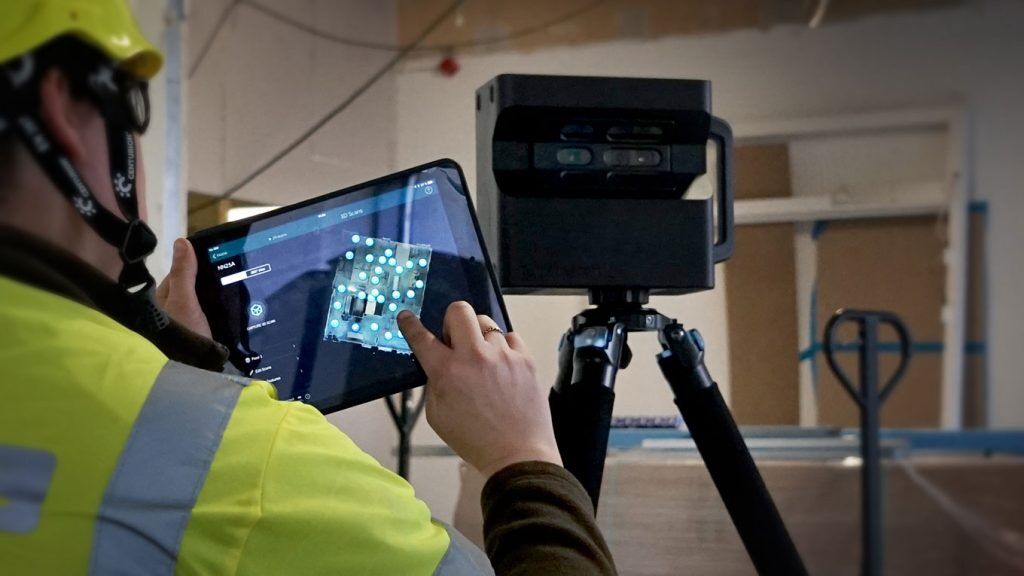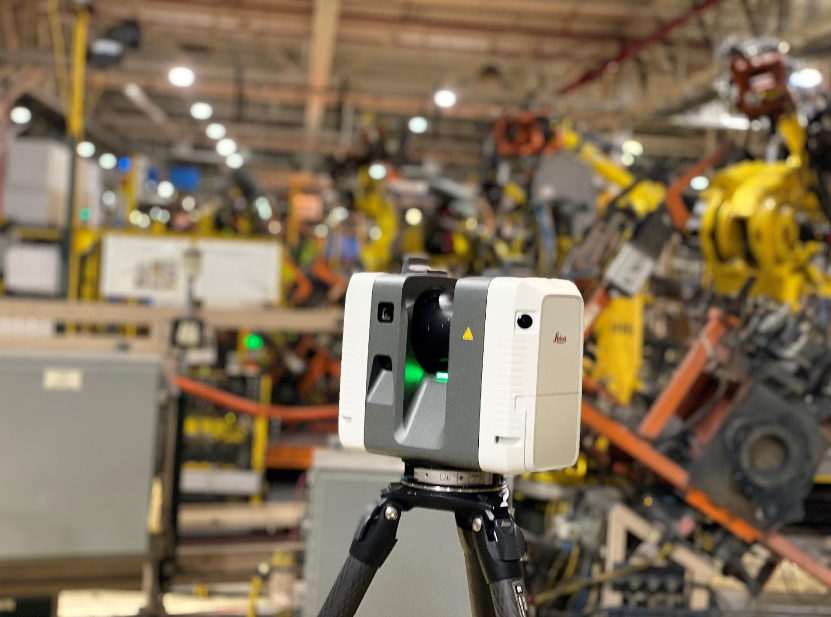Exactly How 3D Laser Scanning Transforms Architectural Style and Building And Construction Projects
3D laser scanning is transforming the landscape of architectural layout and construction. This technology supplies unparalleled accuracy in capturing existing atmospheres, which promotes far better job preparation and implementation. It minimizes errors while boosting efficiency in different stages of growth. The ramifications for partnership amongst engineers, engineers, and various other stakeholders are substantial. These developments open up the door to new design opportunities and innovative remedies. What lies in advance for this progressing modern technology?
The Basics of 3D Laser Scanning Technology
3D laser scanning technology may appear facility, its core principles are uncomplicated and transformative for building style. This technology utilizes laser beam of lights to capture accurate dimensions of physical structures, creating a comprehensive point cloud that represents the scanned setting. A laser scanner releases quick pulses of light, determining the moment it considers the light to return, which allows for the calculation of ranges with amazing accuracy.
The resulting factor cloud can be exchanged a 3D model, offering designers with important aesthetic data. This model allows specialists to adjust and examine layout components within their jobs, permitting ingenious options and improved visualization. By utilizing 3D laser scanning, engineers can much better comprehend the status quo of a website, ensuring that new designs harmonize with their surroundings. This integration of technology right into building layout marks a substantial innovation, cultivating creative thinking and accuracy in the area.

Enhancing Accuracy and Effectiveness in Architectural Projects
As architectural jobs progressively require precision and rate, 3D laser scanning arises as a critical tool in boosting both accuracy and effectiveness. This technology records millions of data factors in a brief timeframe, creating detailed and specific 3D versions of existing frameworks. The ability to acquire accurate dimensions lowers the risk of errors during the layout phase, permitting designers to picture their jobs with exceptional clearness.
The quick data collection procedure lessens the time invested on-site, enabling teams to concentrate on analysis and style improvements. With real-time information accessibility, adjustments can be made promptly, advertising a much more streamlined process. The integration of 3D laser scanning right into architectural techniques not just boosts dimension accuracy yet also boosts the general task timeline, facilitating quicker decision-making. In a sector where precision is vital, this technology stands as a transformative pressure, elevating the criteria of architectural style and building and construction jobs.
Streamlining Collaboration Amongst Stakeholders
While traditional architectural processes frequently entail fragmented communication among stakeholders, 3D laser scanning promotes a more cohesive joint setting. By providing precise, high-resolution information, this modern technology allows engineers, customers, engineers, and professionals to run from a unified factor of referral. The comprehensive visualizations produced via laser scanning eliminate misconceptions and uncertainties, ensuring that all celebrations have accessibility to the exact same info.
This openness boosts decision-making and motivates timely comments, as stakeholders can easily visualize layout components and spatial relationships. Additionally, the combination of 3D scanning data into Building Details Modeling (BIM) systems better simplifies partnership, permitting real-time updates and adjustments. Such seamless communication not just decreases problems however additionally accelerates task timelines, as all stakeholders continue to be lined up throughout the style and building and construction phases. Inevitably, 3D laser scanning changes conventional process into an extra effective and joint procedure, benefiting all celebrations entailed.
Unlocking Creative Opportunities in Layout
By enabling architects to picture complicated spatial connections and intricate details, 3D laser scanning reveals creative possibilities in design. This innovation enables for accurate mapping of existing settings, allowing engineers to discover innovative ideas that could have previously appeared unwise. With very accurate information, designers can explore unconventional types and products, pressing the borders of conventional style.
The assimilation of 3D laser scanning right into the design process promotes cooperation amongst multidisciplinary groups, encouraging the exchange of ideas and improving creativity. The comprehensive visualizations created by this innovation not only help in determining possible layout challenges yet additionally motivate solutions that may not have actually been considered. Therefore, designers can produce extra interesting and dynamic areas that resonate with individuals while meeting practical needs. Inevitably, 3D laser scanning this page changes the building landscape, empowering designers to realize their visions with unmatched precision and imagination.
The Future of 3D Laser Scanning in Architecture and Construction
The combination of 3D laser scanning into architectural style not only enhances imagination however likewise sets the stage for its advancing role in the future of design and building. As technology advances, the precision and performance of laser scanning will continue to improve, enabling architects and builders to develop a lot more intricate designs with accuracy - 3D Scanning. The usage of this innovation in real-time information collection will promote much better decision-making, reducing mistakes and simplifying process
Future applications might consist of increased and online reality integrations, enabling stakeholders to imagine tasks in immersive settings. Furthermore, as sustainability comes to be a priority, 3D laser scanning will support the growth of energy-efficient designs by supplying detailed understandings into existing frameworks. As collaboration among various techniques becomes more important, the ability to share exact 3D versions will promote innovation and improve task outcomes. Eventually, 3D laser scanning will redefine standards in architectural style and construction article source techniques.
Regularly Asked Inquiries
What Is the Cost of Carrying Out 3D Laser Scanning Modern Technology?

Exactly how Long Does a Typical 3D Laser Scanning Project Take?
A normal 3D laser scanning job can take anywhere from a few hours to a number of days, relying on variables such as the project's size, complexity, and the level of detail required for exact data capture.
What Sorts Of Projects Benefit A Lot Of From 3D Laser Scanning?
3D laser scanning advantages different jobs, especially massive building and constructions, historical restorations, and complex remodellings. It enhances accuracy in dimensions, decreases errors, and supplies comprehensive data necessary for effective preparation and execution in building layout and building and construction.

Exist Particular Software Application Programs Required for 3D Laser Scans?
Yes, particular software programs are vital for refining 3D laser scans. 3D Scanning. Popular alternatives consist of Autodesk ReCap, Faro Scene, and Leica Cyclone, each offering one-of-a-kind features tailored for analyzing and visualizing checked data successfully in numerous tasks
How Does 3D Laser Scanning Influence Environmental Sustainability in Building?
3D laser scanning improves environmental sustainability in building by minimizing material waste, enabling accurate measurements, and promoting reliable source use. This innovation allows for better planning, decreasing the ecological impact of building jobs with improved precision and performance.
3D laser scanning is transforming the landscape of architectural layout and building and construction. 3D laser scanning modern technology might appear complicated, its core concepts are transformative and simple for architectural design. By allowing architects to picture intricate spatial partnerships and detailed details, 3D laser scanning reveals imaginative opportunities in style. The assimilation of 3D laser scanning into the layout process promotes collaboration amongst multidisciplinary teams, encouraging the exchange of ideas and boosting creative thinking. The assimilation of 3D laser scanning into click here for more building design not just improves creative thinking yet additionally sets the phase for its developing duty in the future of architecture and construction.